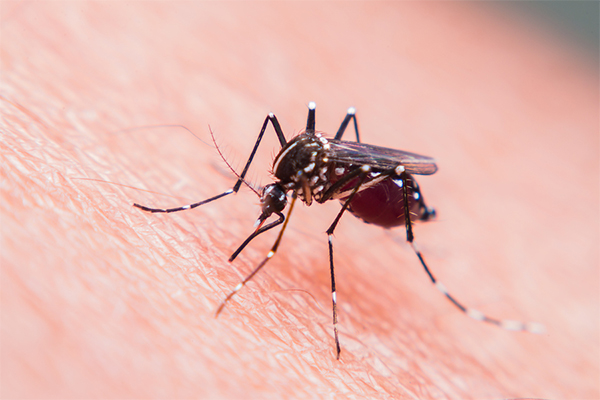On your marks, get set, go! The season is summer and all of the little insects and critters that bite are out in full force from their winter hibernation. Your children can’t wait to play and camp outside, but how do you protect them from what lurks outside and often times makes its way into your home?
The best way to avoid bites is to avoid the insects and critters themselves. Scented soaps or hair products, perfumes and brightly colored clothing attract many types of insects. These products should be avoided if your child is going to be outside. If your child is going to be playing or spending time in tall grass or wooded areas, it is recommended that they wear long pants tucked into their socks and a cap with long hair tucked in. Insects tend to hang out in stagnant pools of water, near food, around garbage cans and in the vicinity of brightly colored flowers. Parents should make sure that children are not playing around these attractants.
What you should know about repellents
The American Academy of Pediatrics and the Centers for Disease Control and Prevention both agree that for children older than two months of age repellents containing 10 percent to 30 percent DEET should be used. DEET should not be used on children younger than two months of age. Repellents should never be applied to children’s hands, around the eyes or to cuts.
The effectiveness is similar for 10 percent to 30 percent DEET, but the duration of effect varies. Ten percent DEET provides protection for about two hours, whereas 30 percent protects for about five hours. Parents should choose the lowest concentration that covers the required amount of time. Never use insect repellent meant for pets on people and never use repellents meant for people on pets.
The U.S. Food and Drug Administration does not recommend the use of combination sunscreen/insect repellent. Sunscreen needs to be reapplied every two hours, and insect repellent should not be reapplied. Parents can apply both an insect repellent product and sunscreen product on their child, but apply sunscreen first, followed by repellent.
The percentage of DEET varies from product to product so parents should always read repellent labels and follow the directions and precautions. Use just enough to cover exposed skin and clothing. Using more will not make the repellent more effective. Make sure your child washes with soap and water to remove the repellent and make sure sprayed clothing is washed before wearing again. Always store repellents out of children’s reach.
Permethrin can be used to treat camping gear and clothes. It is best to spray Permethrin on beforehand and allow it to dry before wearing.
The insects and critters that bite:
TICKS
According to the Centers for Disease Control and Prevention ticks are the most common disease and infection carrying insects in the United States. Most notably, they can be carriers of Lyme Disease.
The symptoms of Lyme Disease include:
- Fever,
- Headaches
- Fatigue
- Circular skin rash
If your child experiences any of these symptoms associated with a tick bite they should be seen by a doctor. It is important to note that a tick generally has to be on the skin for 36 hours to transmit Lyme Disease. Lyme Disease can be treated with antibiotics, but if left untreated, can spread to the joints, heart and nervous system. It is especially important to check children for ticks if they have been out in wooded areas, as ticks often go undetected.
If you find a tick on your child do not just pull the tick off. It is important to get the intact head out of your child’s skin. It is recommended that tweezers are used near the rear of the head in order to pull the entire tick straight out. Once removed, parents should cleanse the area of the tick bite with antiseptic, such as rubbing alcohol.
MOSQUITOES
Mosquitoes in the United States can be carriers of West Nile Virus. There is no specific treatment for the virus and symptoms range from mild to severe.
The symptoms of West Nile virus include:
- Flu-like symptoms
- Fever
- Headache
- Body aches
- Skin rash
FLIES
Painful at first and then itchy bumps
Typically last only 1 or 2 days
FLEAS
Itchy, slightly swollen spots typically found in clusters
Treat animals for fleas, thoroughly vacuum carpet and upholstery and empty the contents in the vacuum into an outside garbage container, remove throw rugs and treat your house with a bomb formulated for flea removal.
FIRE ANTS
Fire Ants are typically found in numbers. It is important to show children what anthills look like and to instruct them to avoid them. Anthills in play areas should be treated.
Symptoms of ant bites include:
- Immediate pain
- Immediate burning sensation
- Immediate itch
- Small swelled red spot filled with clear liquid
BEES AND WASPS
Most people recognize immediately when a bee or a wasp has stung them. Some children may have an allergic reaction such as breathing difficulty or hives. If a child begins to show signs of an allergic reaction, dial 911.
According to the FDA, it’s best to scrape a stinger away in a side-to-side motion with a straight-edged object like a credit card. Using tweezers can push more venom into the skin. After removing a stinger, wash the area with soap and water and apply ice to help reduce swelling.
SCORPIONS
According to the CDC, a pediatrician should see a child who is stung by a scorpion. Symptoms of a scorpion sting may include:
- A stinging or burning sensation at the injection site (very little swelling or inflammation)
- Positive “tap test” (i.e., extreme pain when the sting site is tapped with a finger)
- Restlessness
- Convulsions
- Roving eyes
- Staggering gait
- Thick tongue sensation
- Slurred speech
- Drooling
- Muscle twitches
- Abdominal pain and cramps
- Respiratory depression
SPIDERS
Symptoms associated with spider bites can vary from minor to severe. Although extremely rare, death can occur in the most severe cases. Possible symptoms resulting from a spider bite include the following:
- Itching or rash
- Pain radiating from the site of the bite
- Muscle pain or cramping
- Reddish to purplish color or blister
- Increased sweating
- Difficulty breathing
- Headache
- Nausea and vomiting
- Fever
- Chills
- Anxiety or restlessness
- High blood pressure
The FDA recommends that parents take the following steps if a spider bites their child:
- Stay calm. Identify the type of spider if it is possible to do so safely. Identification will aid in medical treatment.
- Wash the bite area with soap and water.
- Apply a cloth dampened with cold water or filled with ice to the bite area to reduce swelling.
- Elevate bite area if possible.
- Do not attempt to remove venom.
- Immediately seek professional medical attention
BEDBUGS
Bedbugs are typically found in bedding and mattresses, hence the name, but they can also be found in walls, floors and furniture. They are more active during warm weather and at night.
The symptoms of bedbugs include:
- Red, itchy bumps clustered together
- Blisters
SNAKES
According to the AAP, almost every state has at least one species of venomous snake. Signs or symptoms associated with a snake bite may vary depending on the type of snake, but may include:
- A pair of puncture marks at the wound
- Redness and swelling around the bite
- Severe pain at the site of the bite
- Nausea and vomiting
- Labored breathing (in extreme cases, breathing may stop altogether)
- Disturbed vision
- Increased salivation and sweating
- Numbness or tingling around the face and/or limbs
The AAP and the FDA make the following recommendations for parents whose child has been bitten by a snake.
- Seek medical attention as soon as possible. Dial 911
- Try to remember the color and shape of the snake. This can help with treatment of the snakebite.
- Keep still and calm. This can slow down the spread of venom.
- Apply first aid if you cannot get to the hospital right away.
- Lay or sit down with the bite below the level of the heart.
- Wash the bite with soap and water.
- Cover the bite with a clean, dry dressing.
Do NOT do any of the following:
- Do not pick up the snake or try to trap it.
- Do not wait for symptoms to appear if bitten, seek immediate medical attention.
- Do not apply a tourniquet.
- Do not slash the wound with a knife.
- Do not suck out the venom
TREATING BUG BITES
The FDA has approved oral over-the-counter antihistamines like Benadryl and topical ointments containing hydrocortisone for itch relief. Ibuprofen and acetaminophen can provide relief of pain from bites and stings. Colloidal oatmeal baths, calamine lotion and certain products containing baking soda can help provide itch relief as well.
Parents should ask their pharmacist because scratching itchy bug bites can lead to infection.
SIGNS OF INFECTION:
- Bright Redness
- Fever
- Worsening Soreness
ALLERGIC REACTIONS
Signs of allergic reaction: Some people can experience anaphylaxis, a severe, life-threatening allergic reaction. This is a medical emergency that warrants calling 911 immediately. Signs of an allergic reaction, which may occur within seconds to minutes, include:
- Sneezing,
- Wheezing,
- Hives,
- Nausea,
- Vomiting,
- Diarrhea,
- Sudden anxiety,
- Dizziness,
- Difficulty breathing,
- Chest tightness,
- And itching or swelling of the eyes, lips, or other areas of the face.
The FDA recommends that if your child has ever had an allergic reaction to a sting or bite, an allergist should evaluate him. In some cases, it may be advised to wear a medical identification tag that states the allergy, and to carry epinephrine, a medication used to treat serious or life-threatening allergic reactions. Sometimes allergy shots may also be recommended.
For more information about the pediatric services at the Children’s Hospital of Georgia visit augustahealth.org/chog or call 706-721-KIDS (5437).
Sources: The Centers for Disease Control and Prevention, U.S. Food and Drug Administration, American Academy of Pediatrics




